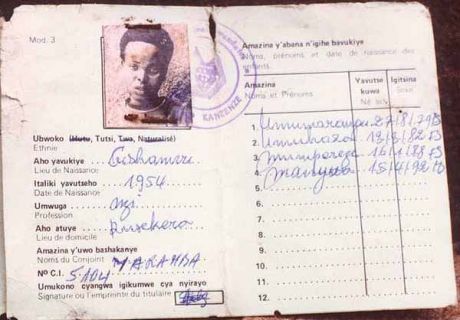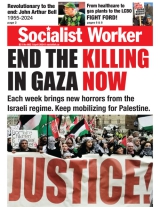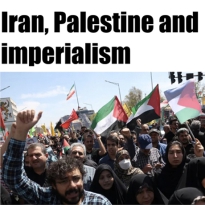Features
You are here
Rwanda and the myth of non-intervention

April 25, 2014
April to July marks the 20th anniversary of the Rwandan genocide, which is repeatedly invoked to justify Western intervention. But the genocide was the result of Western intervention, not its absence.
In a span of 100 days nearly a million people were killed through an orchestrated massacre: Tutsis were scapegoated, identified by identity cards and hacked to pieces by government militias armed with machetes and machine guns. This is supposed to be evidence of ancient tribal divisions, requiring Western intervention to police. But this is a racist myth. It was Western intervention itself that provoked and armed the genocide.
Colonial divide and rule
For generations Belgium intervened to pit Tutsis and Hutus against each other. Hutus were the agricultural majority group while Tutsis were the minority cattle-herders—but these groups were fluid and changeable, and shared language and religion.
It was Belgian colonialism at the start of the 20th century (taking over from Germany that had first colonized Rwanda) that imposed a rigid racial distinction between Tutsis and Hutus, in order to use Tutsi elites to rule. In 1933, while Hitler was using identity cards to stoke anti-Semitism in Germany, Belgium issued identity cards (pictured above) to divide Hutus and Tutsis. At the time the West saw no problem with either of these racist practices.
During the anti-colonial period Belgium switched sides and supported reprisals against Tutsis, driving large numbers out of the country.
Economic crisis and austerity
Then the IMF intervened, deepening poverty. Like other colonies, Rwanda’s economy was made dependent on mono-crop exports, specifically coffee. When coffee prices fell in the late 1980s, the IMF imposed a currency devaluation to boost coffee exports.
The result: “Health and education disintegrated under the brunt of the IMF-imposed austerity measures: despite the establishment of ‘a social safety net,’ the incidence of severe child malnutrition increased dramatically; the number of recorded cases of malaria increased by 21 percent in the year following the adoption of the IMF program, largely as a result of the absence of anti-malarial drugs in the public health centers; and the imposition of school fees at the primary-school level led to a massive decline in school enrolment.”
Many unemployed youth joined the government militias (the Interahamwe), and had their frustrations challenged towards Tutsis.
Inter-imperial rivalry
Inter-imperial rivalry then intervened to arm these artificial divisions. As Belgian imperialism waned the French increasingly intervened, providing military support for the Hutu dictator Juvénal Habyarimana. Meanwhile the US armed the Rwandan Patriotic Front (RPF), a group of Tutsi rebels that invaded from Uganda in 1990. As French Cooperation Minister Bernard Debre explained, “What one forgets to say is that, if France was on one side, the Americans were on the other, arming the Tutsis who armed the Ugandans. I don't want to portray a showdown between the French and the Anglo-Saxons, but the truth must be told.”
As one analysis described, “More than a dozen nations helped fuel the Rwandan war, and both sides appear to have purchased considerable weaponry through private sources on the open market… The key suppliers for government forces were France, Egypt, and South Africa. A $6 million contract between Egypt and Rwanda in March 1992, with Rwanda’s payment guaranteed by a French bank, included 60-mm and 82-mm mortars, 16,000 mortar shells, 122-mm D-30 howitzers, 3,000 artillery shells, rocket-propelled grenades, plastic explosives, antipersonnel land mines, and more than three million rounds of small arms ammunition.”
These arms deals were key to the machete massacre, as Human Rights Watch explained: “In discussing the impact of the arms trade and human rights, we now often hear the argument: ‘If in Rwanda so many were killed with machetes, what is the point of restricting the trade in arms?’ This argument has been a convenient tool in the hands of those who wish to deflect attention from their own responsibility in restraining arms transfers. And the machete claim is a myth, based on a misunderstood reality. The people wielding the machetes in Rwanda operated in an environment in which a heavily armed movement (combination government and militias) provided the necessary protection and encouragement for the killers… The arms in the hands of the Rwandan génocidaires were supplied by France, apartheid-era South Africa, Egypt, and others. France of course provided more than just arms to its Rwandan allies, and even during the genocide it continued to offer military support, though much less openly.”
This included “peacekeepers” who helped the Iterahamwe track down and kill Tutsis—earning France’s “socialist” President Francois Mitterand the nickname Mitterahamwe.
Prevent genocide: challenge imperialism
The myths around the Rwandan genocide of 1994 are designed to whitewash the colonial and imperial context in Rwanda, and ignore the broader context—a year after “humanitarian intervention” brought torture to Somalia, at the same time as the US was supporting the Taliban in Afghanistan and imposing genocidal sanctions in Iraq, and while genocidal residential schools were still operational in Canada. The Rwandan genocide could have been averted—if the West had not created ethnic divisions, not imposed austerity, not sent weapons and not provided military support.
By re-writing history, Rwanda becomes a buzzward to support further Western intervention, as inter-imperial rivalry between the US, Europe and China drives a new scramble for Africa. To prevent genocides, we need to challenge their roots: capitalism, racism and war.
If you like this article, register for Marxism 2014: Resisting a System in Crisis, a weekend-long conference June 14-15 in Toronto. Sessions include “The new scramble for Africa,”, “Global resistance to imperialism”, and “South Africa after Mandela.”
Section:










